Indian Porcupine
- March 21, 2024
- 0 comment
The Indian Porcupine, known scientifically as Hystrix indica, is a fascinating rodent species native to the Indian subcontinent. Renowned for its distinctive appearance, it boasts a robust body covered in sharp, barbed quills, serving as its primary defense mechanism against predators. Typically ranging from 60 to 90 centimeters in length, these nocturnal creatures are adept climbers and foragers, inhabiting diverse environments such as forests, grasslands, and agricultural areas.
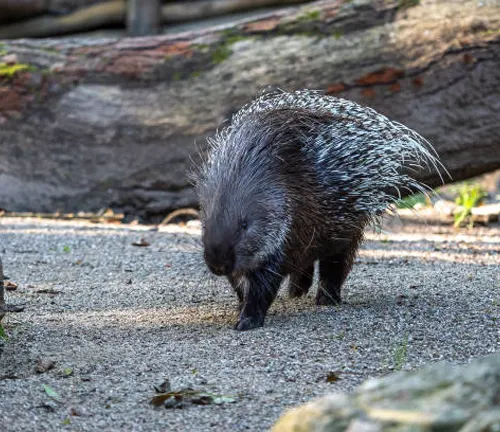
Despite their formidable appearance, Indian Porcupines are generally shy and non-aggressive, preferring to avoid confrontations with humans. With a diet consisting mainly of roots, tubers, bark, and fruits, they play a crucial role in maintaining ecological balance within their habitats. While they hold symbolic significance in various cultures across India, Indian Porcupines face threats from habitat loss, poaching, and human-wildlife conflicts. Efforts towards conservation and raising awareness about their importance are essential to ensure the continued existence of this unique species in the Indian wilderness.
Indian Porcupine Characteristics
| Specification | Description |
|---|---|
| Scientific Name | Hystrix indica |
| Average Length | 60 – 90 centimeters |
| Weight | Up to 18 kilograms |
| Habitat | Forests, grasslands, agricultural areas |
| Distribution | Indian subcontinent, including India, Nepal, Bangladesh, and Sri Lanka |
| Activity | Nocturnal |
| Diet | Roots, tubers, bark, fruits |
| Defense Mechanism | Sharp, barbed quills |
| Behavior | Shy and non-aggressive |
| Reproduction | Mating season typically during monsoon months; gestation period around 3 months |
| Offspring | Usually 1 or 2 offspring called porcupettes |
| Lifespan | Around 10 to 15 years in the wild |
| Conservation Status | Species of least concern according to IUCN |
| Threats | Habitat loss, poaching, human-wildlife conflicts |
| Cultural Significance | Symbolic importance in various cultures across India |
Exploring the Spiky Charm of India’s Unique Rodent
If you’ve ever ventured into the wilderness of India, chances are you might have come across one of its most fascinating inhabitants – the Indian Porcupine. With its distinctive appearance and intriguing behaviors, this species of porcupine holds a special place in the ecosystem of the Indian subcontinent. Let’s delve into the world of the Indian Porcupine and uncover its secrets.
Physical Characteristics

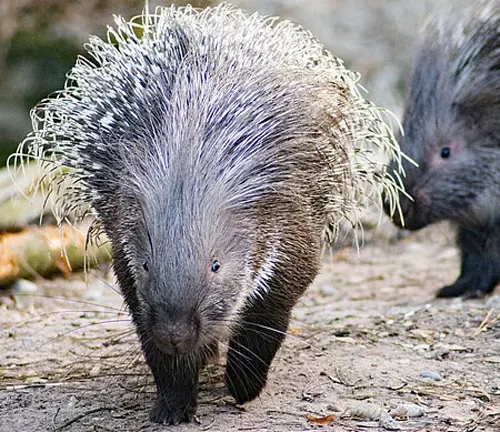
The physical characteristics of the Indian Porcupine are distinctive and noteworthy. Here are some key features:
- Size: Indian Porcupines typically measure between 60 to 90 centimeters in length, making them relatively large rodents.
- Body Shape: They have a stout and robust body, with short legs that are adapted for both climbing and digging.
- Quills: One of their most recognizable features is their coat of sharp, barbed quills. These quills cover the back, sides, and tail of the porcupine, serving as a formidable defense mechanism against predators.
- Coloration: Indian Porcupines often have dark brown or black fur, providing effective camouflage in their natural habitats.
- Facial Features: Their faces are characterized by small eyes and ears, as well as a blunt snout.
- Tail: The tail of an Indian Porcupine is relatively short and covered with shorter quills compared to the rest of its body.
- Weight: They can weigh up to 18 kilograms, depending on factors such as age, gender, and overall health.
Habitat and Distribution
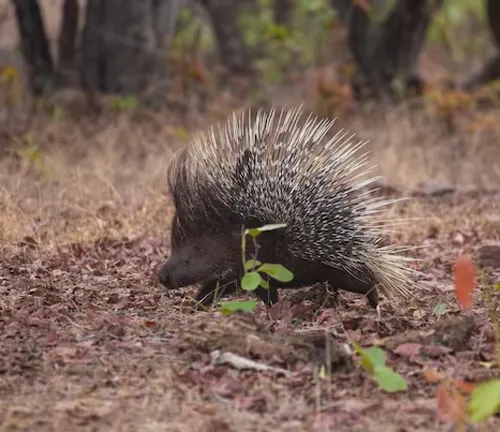
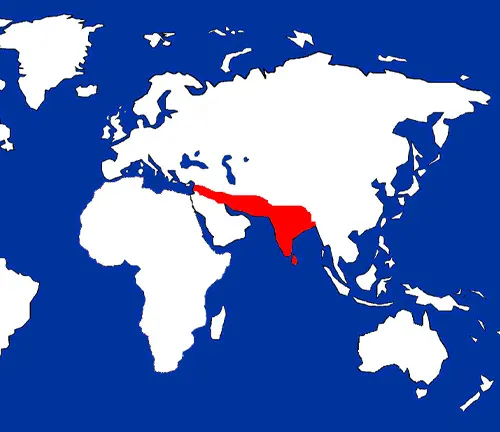
The Indian Porcupine is a highly adaptable species that can thrive in various habitats across the Indian subcontinent. Here’s an overview of its habitat and distribution:
Habitat
Indian Porcupines are found in a diverse range of environments, including:
- Forests: They inhabit both tropical and deciduous forests, where they can find ample shelter and food sources.
- Grasslands: Indian Porcupines are also commonly found in grasslands and savannas, where they forage for vegetation and utilize burrows for shelter.
- Agricultural Areas: In addition to natural habitats, they are known to venture into agricultural lands in search of crops and cultivated plants.
Distribution
Indian Porcupines are distributed across the Indian subcontinent, including:
- India: They are widely distributed throughout India, from the Himalayan foothills in the north to the southern tip of the subcontinent.
- Nepal: Indian Porcupines are also found in various regions of Nepal, particularly in forested areas and rural landscapes.
- Bangladesh: In Bangladesh, they inhabit forested regions as well as agricultural lands, where they may come into conflict with farmers.
- Sri Lanka: While less common compared to other regions, Indian Porcupines can also be found in certain parts of Sri Lanka, particularly in forested and rural areas.
Behavior and Diet

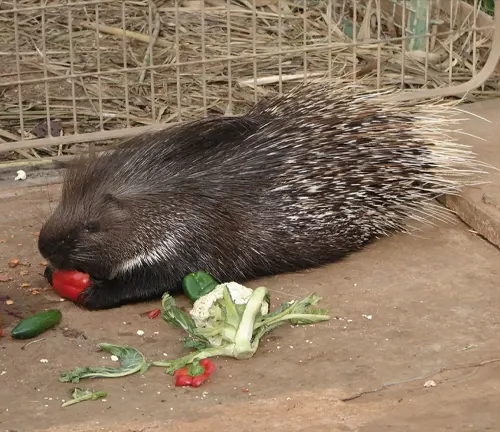
Behavior
- Nocturnal Habits: Indian Porcupines are primarily active during the night, which helps them avoid predators and regulate their body temperature in hot climates.
- Solitary Nature: While they may occasionally be seen in pairs or small family groups, Indian Porcupines are generally solitary animals. They establish territories and mark them with scent glands to communicate with other porcupines.
- Sheltering Behavior: Indian Porcupines are proficient diggers and climbers. They often create burrows in the ground or seek refuge in natural crevices or hollows in trees for shelter during the day.
- Defense Mechanisms: When threatened, Indian Porcupines raise their quills to appear larger and more intimidating. They may also emit warning sounds or stamp their feet as a deterrent.
Diet
- Herbivorous Diet: Indian Porcupines are strict herbivores, feeding on a variety of plant materials. Their diet includes roots, tubers, bark, leaves, fruits, and occasionally agricultural crops.
- Foraging Behavior: They use their strong sense of smell to locate food sources, often relying on their keen sense of smell to detect underground plant parts like roots and tubers.
- Crop Damage: In agricultural areas, Indian Porcupines may sometimes venture into fields or orchards in search of food, leading to conflicts with farmers. Their feeding habits can result in damage to crops such as maize, sugarcane, and vegetables.
- Water Consumption: While Indian Porcupines primarily obtain moisture from their diet, they may also drink from available water sources such as streams, ponds, or puddles when necessary.
Reproduction and Life Cycle
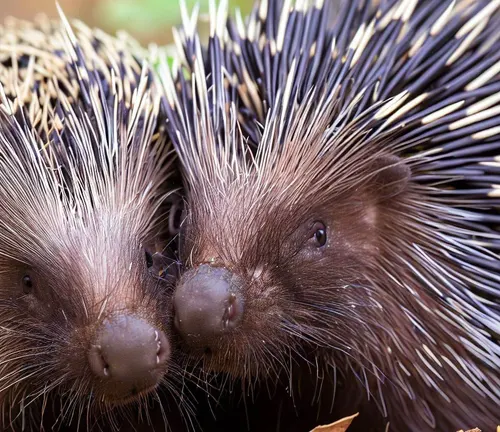
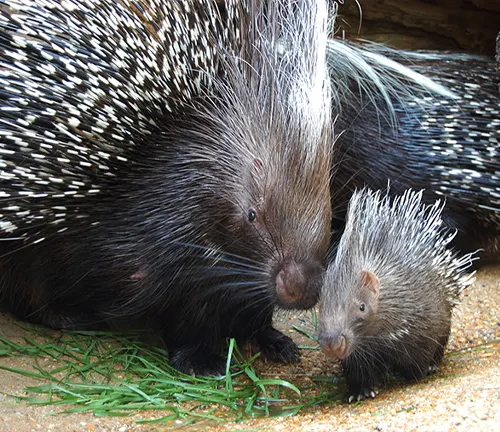
Reproduction and the life cycle of the Indian Porcupine are intriguing aspects of their biology. Here’s an overview:
Reproduction
- Mating Behavior: Indian Porcupines typically mate during specific seasons, with mating activity often peaking during the monsoon months. Males engage in elaborate courtship rituals to attract females, which may include vocalizations, displays of dominance, and scent marking.
- Gestation Period: After successful mating, female porcupines undergo a gestation period of approximately three months before giving birth.
- Birth of Offspring: Female Indian Porcupines give birth to one or two offspring, known as porcupettes. These young are born with soft quills, which harden within a few hours after birth.
- Parental Care: After birth, the mother provides care and protection to her offspring, nursing them and teaching them essential survival skills. Porcupettes remain dependent on their mother for several weeks before becoming more independent.
Life Cycle
- Early Development: During the first few weeks of life, porcupettes rely entirely on their mother for nourishment and protection. They remain hidden in the safety of the burrow or nest, venturing out only briefly for feeding.
- Quill Growth: As the porcupettes grow, their quills gradually harden and develop, providing them with defense against predators.
- Maturation: As they mature, young Indian Porcupines learn essential skills such as foraging for food, navigating their environment, and avoiding predators. They reach sexual maturity at around one to two years of age.
- Reproductive Maturity: Once they reach reproductive maturity, Indian Porcupines may begin seeking mates and engaging in the mating behaviors characteristic of their species.
Interaction with Humans
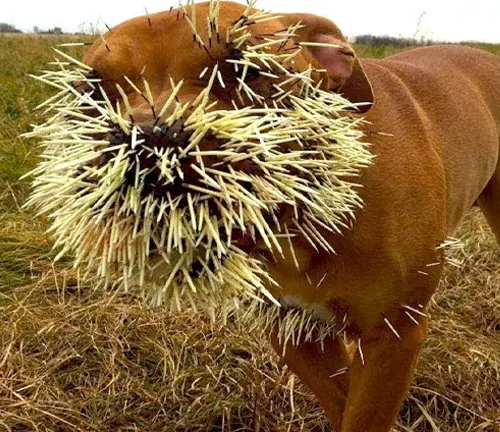

The interaction between Indian Porcupines and humans is a complex aspect influenced by cultural, ecological, and socioeconomic factors. Here’s an overview:
Cultural Significance:
- Symbolism: In various cultures across India, porcupines hold symbolic significance. They are often associated with qualities like wisdom, protection, and resilience, and may feature in folklore, myths, and traditional stories.
Conservation and Conflict:
- Human-Wildlife Conflict: As human populations expand and encroach upon natural habitats, conflicts between humans and Indian Porcupines can arise. In agricultural areas, porcupines may damage crops, leading to tensions between farmers and wildlife.
- Conservation Initiatives: Efforts are underway to mitigate human-wildlife conflicts and conserve Indian Porcupine populations. This includes strategies such as habitat restoration, the implementation of non-lethal deterrents to protect crops, and community-based conservation programs.
Economic Impacts:
- Livelihoods: While Indian Porcupines can sometimes be perceived as pests, they also play a crucial role in ecosystems as seed dispersers and prey for predators. Balancing their conservation with human needs is essential to ensure sustainable livelihoods and biodiversity conservation.
- Tourism and Awareness: Indian Porcupines can also contribute to ecotourism initiatives, where visitors have the opportunity to observe these fascinating animals in their natural habitats. Such activities can raise awareness about the importance of wildlife conservation and generate revenue for local communities.
Cultural Practices:
- Traditional Uses: In some communities, porcupine quills and body parts are used for various purposes, including traditional medicine, ornamentation, and cultural ceremonies. Balancing cultural practices with conservation considerations is crucial to ensure the sustainable use of wildlife resources.
Threats and Conservation Efforts
Threats to Indian Porcupines and conservation efforts aimed at their protection are crucial topics in wildlife management. Here’s an overview:
Threats:
- Habitat Loss: Deforestation, urbanization, and agricultural expansion lead to the loss and fragmentation of natural habitats, reducing suitable living spaces for Indian Porcupines.
- Poaching: Indian Porcupines are hunted for their meat, which is considered a delicacy in some regions. Additionally, their quills are sought after for use in traditional medicine and crafts.
- Human-Wildlife Conflict: Porcupines may raid crops in agricultural areas, leading to conflicts with farmers. In retaliation, they may be killed or injured by humans attempting to protect their livelihoods.
Conservation Efforts:
- Habitat Protection: Conservation organizations work to protect and restore critical habitats for Indian Porcupines. This includes establishing wildlife reserves, protected areas, and corridors to maintain connectivity between populations.
- Community Engagement: Engaging local communities in conservation efforts is essential. Educating people about the importance of porcupines in ecosystems and implementing sustainable land-use practices can help reduce human-wildlife conflicts.
- Anti-Poaching Measures: Law enforcement agencies collaborate with conservationists to combat poaching and illegal wildlife trade. Strict enforcement of laws and penalties helps deter poachers and protect porcupine populations.
- Research and Monitoring: Scientific research plays a vital role in understanding porcupine ecology, behavior, and population dynamics. Monitoring populations helps assess their status and implement targeted conservation measures.
- Public Awareness: Raising awareness about the importance of conserving Indian Porcupines and their habitats is crucial. Outreach programs, educational campaigns, and media initiatives can inspire public support and foster a culture of conservation.
Interesting Facts and Trivia
- Indian Porcupines are skilled climbers and can often be found perched high up in trees.
- Contrary to popular belief, porcupines cannot shoot their quills but will raise them when threatened to appear more intimidating.
- In some tribal cultures, porcupine quills are used for decorative purposes or as traditional medicine.
Indian Porcupine in Popular Culture
The Indian Porcupine holds a significant place in popular culture, folklore, and traditions across the Indian subcontinent. Here’s how it is depicted:
Folklore and Mythology:
- In various indigenous cultures and tribal communities, the Indian Porcupine is often featured in folklore and mythology. It is sometimes portrayed as a wise and elusive creature, revered for its ability to navigate the complexities of the natural world.
- Stories and legends often attribute supernatural powers or symbolic significance to the porcupine, associating it with qualities like wisdom, protection, and resilience.
Literature and Art:
- References to the Indian Porcupine can be found in literature, art, and traditional crafts. It is depicted in paintings, sculptures, and other forms of visual art, often symbolizing elements of nature, wildlife, or cultural identity.
- Writers and poets may incorporate porcupines into their works as metaphors or symbols, reflecting themes of survival, adaptability, and the interconnectedness of life.
Media and Entertainment:
- The Indian Porcupine occasionally makes appearances in popular media, including films, television shows, and documentaries. These portrayals may highlight the porcupine’s unique characteristics, behaviors, and role in the ecosystem.
- Wildlife documentaries and nature programs often feature segments on Indian Porcupines, showcasing their habitats, behaviors, and interactions with other species.
Cultural Symbolism:
- In some regions, the Indian Porcupine holds symbolic significance in cultural rituals, ceremonies, and traditional practices. It may be invoked for protection, luck, or spiritual guidance, particularly in rural and indigenous communities.
- Porcupine motifs and imagery may adorn clothing, jewelry, and household items, serving as decorative elements and cultural identifiers.
Different Species
African Crested Porcupine
(Hystrix cristata)
Found in sub-Saharan Africa, this species is larger than the Indian Porcupine and has longer, more pronounced quills.
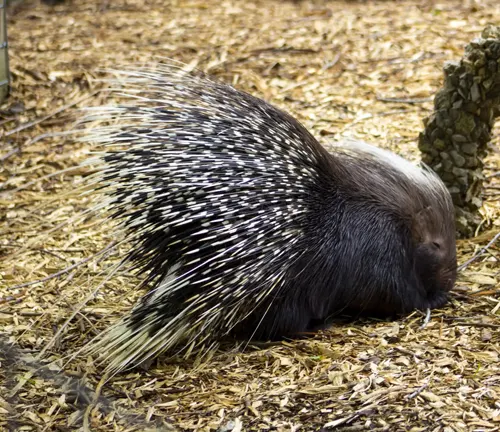
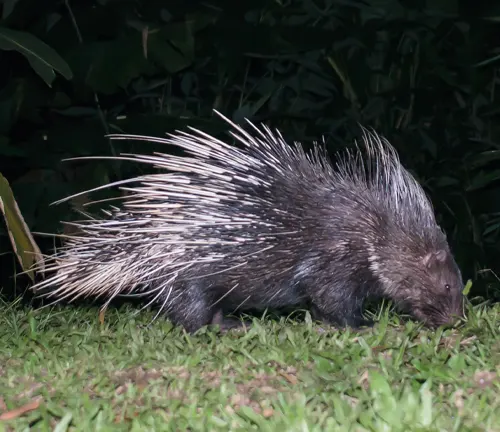
Malayan Porcupine
(Hystrix brachyura)
Native to Southeast Asia, including countries like Malaysia, Indonesia, and Thailand, this species has shorter quills compared to other porcupine species.
North American Porcupine
(Erethizon dorsatum)
Found in North America, from Alaska to Mexico, this species is known for its extensive range and adaptable nature.
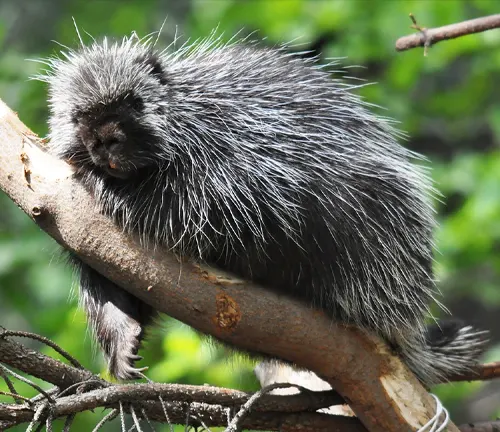
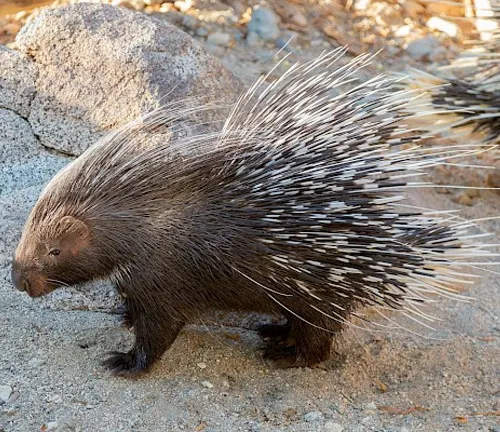
Cape Porcupine
(Hystrix africaeaustralis)
Endemic to southern Africa, this species inhabits a variety of habitats, including savannas, forests, and scrublands.
Philippine Porcupine
(Hystrix pumila)
Native to the Philippines, this species is smaller in size compared to other porcupine species and has a more restricted range.

Frequently Asked Questions (FAQs)
- What is the size of an Indian Porcupine?
Indian Porcupines typically range in size from 60 to 90 centimeters in length. - Do Indian Porcupines have any predators?
Yes, Indian Porcupines are preyed upon by large carnivores such as leopards, tigers, and dholes. - How many quills does an Indian Porcupine have?
An Indian Porcupine can have thousands of quills covering its body. - What do Indian Porcupines eat?
Indian Porcupines are herbivores and primarily feed on roots, tubers, bark, and fruits. - Are Indian Porcupines aggressive towards humans?
Indian Porcupines are generally shy and non-aggressive but may defend themselves if threatened. - Can Indian Porcupines shoot their quills?
No, Indian Porcupines cannot shoot their quills. They raise their quills when threatened as a warning display. - Where can Indian Porcupines be found?
Indian Porcupines are distributed across the Indian subcontinent, including countries like India, Nepal, Bangladesh, and Sri Lanka. - How do Indian Porcupines reproduce?
Indian Porcupines mate during specific seasons, with males engaging in courtship rituals to attract females. - Are Indian Porcupines solitary animals?
While they may be solitary most of the time, Indian Porcupines may also form small family groups or pairs during mating and parenting. - What are the main threats to Indian Porcupines?
Habitat loss due to deforestation, poaching, and road accidents are among the primary threats to Indian Porcupines. - Do Indian Porcupines have any cultural significance?
Yes, Indian Porcupines hold symbolic importance in various cultures across India, often representing qualities like wisdom and protection. - Can Indian Porcupines be kept in captivity?
While some wildlife sanctuaries may house Indian Porcupines for educational purposes, they are not commonly kept as pets due to their wild nature and specific habitat requirements.





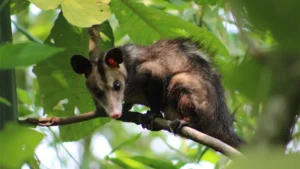




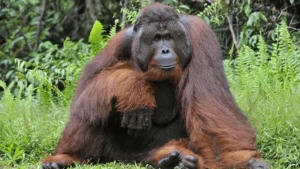
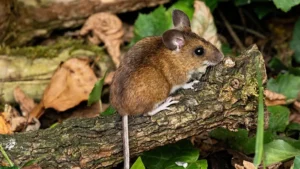
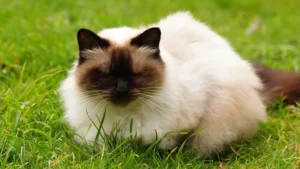
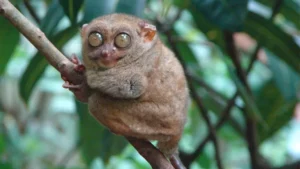
Leave your comment